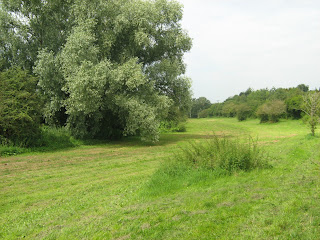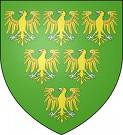It isn't known if the prince was killed in battle or executed shortly afterwards. One account mentions him seeking mercy from his treacherous brother-in-law, George, Duke of Clarence, brother of Edward IV. George was married to the Earl of Warwick's elder daughter, whilst the prince had married the younger, Anne Neville, who would of course go on to marry Edward and George's younger brother, Richard, then Duke of Gloucester, later King. Another account has the captured prince being brought before Edward IV and defiantly claiming his birthright. Edward then allegedly struck him and his men then fell upon the prince and killed him. Whatever happened, IMO, there was no way Edward would have left Tewkesbury alive.
Ironically, Clarence himself ended up being buried at Tewkesbuy when he again fell foul of his brother Edward. Grief-stricken over the death of his duchess, Isabel, in childbirth, Clarence hanged the servant who had cared for her without any trial and antagonised the king. He was arrested, taken to the Tower of London, and legend has it, drowned in a butt of malmsey wine. His remains, and those of his duchess, are kept in a vault under Tewkesbury Abbey and there is no access. They are contained in a glass case, and recently, research into them has claimed they may not be his remains as they appear to be of someone much older. Edward IV and his brother George were completely ruthless, and it therefore makes sense to me that their younger brother Richard was influenced by them and was equally, if not more, ruthless than them.
The grating that covers the resting place of George and his wife, Isabel, the plaque explaining their burial arrangements, and a picture of the glass case containing their remains. You cannot see this glass case through the grill.
The Abbey is also the resting place for the many of the de Clare and Despencer families. Eleanor de Clare was the niece of Edward II, and was married to Hugh Despencer, the later favourite of Edward II (after the murder of Piers Gaveston of course). To find out more about Despencer, read Kathryn's well-researched blog Edward II, here For some reason, his tomb has another sarcophagus placed on top of it.



















